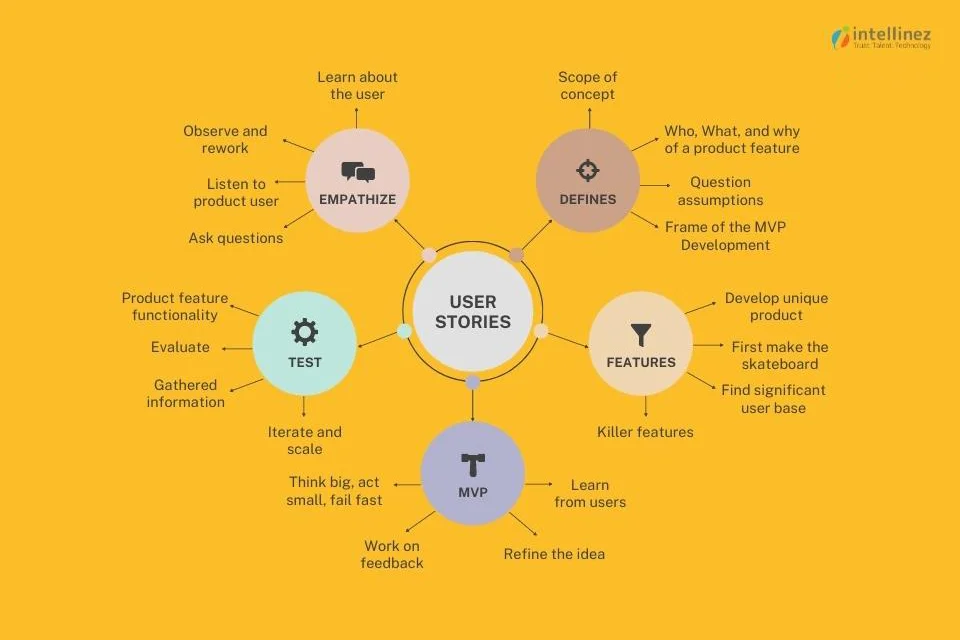Table of Contents
Agile methodology has transformed the way software development is approached in modern times. It emphasizes flexibility, collaboration, and iterative progress, enabling teams to adapt quickly to changing requirements and customer needs. Unlike traditional methodologies, which follow a rigid, sequential process, Agile focuses on delivering functional software in shorter cycles, known as sprints. This approach allows teams to continuously integrate feedback, ensuring the final product meets evolving expectations and market demands. Agile’s adaptability has made it a cornerstone of modern software development, especially in fast-paced industries where rapid changes are the norm.
Manual testing in agile environment plays a critical role in maintaining software quality throughout the development process. Testing is not a one-time activity but is integrated into each sprint ensuring that new features and changes are thoroughly evaluated before release. Continuous testing allows teams to identify issues early, reducing the likelihood of costly fixes later and improving the overall reliability of the product. Both manual and automated testing are employed, though their roles in the agile methodology vary depending on the needs of the project.
Despite the growing focus on automation, manual testing remains an essential component of agile environments. Although automation excels at repetitive tasks and large-scale testing, it often lacks the human insight needed for exploratory, usability, and ad-hoc testing. Manual testing provides a hands-on approach to simulating real-world user interactions, catching subtle bugs that automation may overlook. It also offers flexibility, making it easier to adapt to the fast-paced, dynamic nature of agile projects.
As a result, manual testing continues to play a vital role in ensuring software quality, complementing automation, and enhancing the overall effectiveness of agile testing strategies. In this blog, we will delve into the role of manual testing in an agile environment and share strategies for staying on top of continuous delivery demands.
Understanding Agile Environments
Agile environments are built on a set of key principles that prioritize flexibility, collaboration, and the continuous delivery of high-quality software. These principles guide how teams work, ensuring that the development process remains adaptable and customer-focused.
At the core of agile is iterative development, where projects are broken down into smaller, manageable chunks called sprints or iterations. Each sprint typically lasts between one to four weeks, and at the end of each cycle, teams deliver a functional version of the product. This approach allows for continuous progress and regular feedback, ensuring that the product evolves in alignment with customer needs.
Collaboration is another fundamental principle of agile. Agile emphasizes teamwork, where developers, testers, product owners, and stakeholders work closely together throughout the development process. Daily stand-up meetings, also known as scrums, facilitate communication, help teams stay aligned, resolve issues quickly, and maintain a clear focus on objectives.
Flexibility is central to the success of agile projects. Agile frameworks allow teams to adapt to changing requirements without causing disruptions. As the project progresses, priorities can shift, and agile teams are prepared to adjust to meet evolving customer expectations.
Customer feedback plays a crucial role in the agile approach. By involving clients or end users in the development process, teams can gather real-time insights, making improvements that reflect actual needs. This direct feedback loop enhances customer satisfaction and reduces the risk of building features that may not meet the desired outcomes.
Agile also promotes CI/CD, ensuring that new code is integrated into the existing project frequently, minimizing bugs and technical debts. The focus is always on the delivery of functional software at regular intervals, keeping the product’s development aligned with business goals.
What is Manual Testing?
Manual testing is a fundamental software testing process where testers manually execute test cases without using automated tools or scripts. This approach involves a hands-on evaluation of the software to ensure that it meets specified requirements and functions correctly.
Definition and Key Aspects of Manual Testing

Manual testing involves executing test cases, documenting results, and identifying defects through direct interaction with the application. Testers follow predefined test scripts or exploratory testing techniques to assess the functionality, usability and reliability of the software. Key aspects include:
- Test Case Execution: Testers manually perform actions on the software to verify that it behaves as expected.
- Defect Reporting: Identifying and documenting any bugs or issues encountered during testing.
- Exploratory Testing: allowing testers to explore the application beyond scripted test cases to uncover unexpected issues.
- Usability Testing: Assessing the software’s user-friendliness and overall experience from a human perspective.
Manual testing excels in areas where human intuition, creativity, and critical thinking are crucial. Testers can use their understanding of user behavior and the application context to:
- Identify Subtle Issues: Recognize nuanced defects that automated scripts might miss.
- Adapt the Changes: Quickly adjust testing approaches in response to evolving requirements or unexpected findings.
- Provide Feedback: Offer valuable insights into the software’s usability and overall user experience based on their direct interaction with the application.
The Importance of Manual Testing in Agile

In agile environments, manual testing plays a pivotal role in ensuring the delivery of high-quality software. While automated testing has gained prominence for its efficiency in handling repetitive tasks, manual testing brings unique advantages that are crucial within the agile framework.
Early Defect Detection
One of the primary benefits of manual testing in agile is the ability to detect defects early in the development cycle. Agile methodologies emphasize iterative development with frequent releases, known as sprints. Manual testers can perform exploratory and ad-hoc testing during each sprint, identifying issues that automated tests might overlook. The proactive approach allows teams to address problems promptly, reducing the time and cost associated with fixing defects later in the project.
Real User Simulation
Manual testing provides a closer simulation of real-world user interaction. Testers navigate the software as end-users would, uncovering issues, inconsistencies, and functionality gaps that automated tests might miss. This human-centric approach ensures that the software not only meets technical specifications but also delivers a positive user experience. By experiencing the application firsthand, testers can provide valuable feedback on user interface design, navigation flow, and overall user satisfaction.
Flexibility and Adaptability
Agile projects are characterized by rapidly changing requirements and continuous integration of new features. Manual testing offers the flexibility to adapt quickly to these changes without the need for extensive script modifications required in automated testing. Testers can adjust their focus based on the latest updates, ensuring that new functionalities are thoroughly evaluated. This adaptability is essential for maintaining testing effectiveness in fast-paced agile environments.
Understanding Complex User Flows
Certain aspects of software require nuanced understanding and critical thinking that only human testers can provide. Complex user flows, intricate business logics, and context specific scenarios often challenge automated testing tools. Manual testers can employ creativity and intuition to explore these areas deeply, identifying defects and improvement opportunities that might otherwise remain hidden. Their ability to think like end-users enables them to test beyond predefined cases, enhancing the software’s robustness and reliability.
Complementing Automated Testing
While automated testing excels at handling repetitive and time-consuming tasks, it cannot entirely replace the human element. Manual testing complements automation by covering areas that require human judgment, such as visual aesthetics, user experience, and exploratory testing. This combination ensures a more comprehensive testing strategy. In agile teams, where speed and quality are paramount, leveraging both manual and automated testing optimizes resource utilization and enhances overall product quality.
Enhancing Communication and Collaboration
Manual testers often serve as a bridge between developers, product owners, and stakeholders. Their insights from hands-on testing sessions contribute to more informed decision-making and foster collaboration within the team. By communicating findings effectively, manual testers help align the development process with user expectations and business objectives. This collaborative dynamic is integral to the success of agile methodologies, which prioritize teamwork and continuous feedback.
How Manual Testing Complements Automated Testing?

In software development, manual testing and automated testing play vital roles in ensuring a product’s quality. While automated testing excels in speed and efficiency, manual testing brings a human touch that is equally essential. Together, they create a balanced and thorough approach to testing. Here’s how manual testing complements automated testing in an agile environment:
Addressing Different Testing Needs
Automated testing is ideal for repetitive tasks like regression testing, performance checks, and large-scale testing scenarios. It allows teams to quickly run tests across multiple environments with minimal effort. However, manual testing steps in where automation falls short. Exploratory, ad-hoc, and usability testing require human intuition, creativity, and adaptability, which are key to finding issues that automation may miss. Manual testers can evaluate user interfaces, experience design, and real-world scenarios, giving a more comprehensive assessment of the software.
Handling Dynamic and Complex Scenarios
Some software features, particularly those involving complex business logic or user flows, can be difficult to test using automated scripts. Manual testers can simulate real user behavior interactions, adjusting their approach based on observations. This flexibility is crucial for testing areas that are unpredictable or not easily scripted.
Validating Automated Changes
Before implementing automated scripts, manual testing was often used to validate initial test cases. By performing these tests manually first, testers ensure that the scripts reflect accurate and meaningful scenarios. This helps prevent false positives or negatives in automated test results, improving the reliability of automation.
Adapting to Rapid Changes
In agile environments, requirements and features change frequently, often mid-sprint. While automated tests need to be updated to accommodate these changes, manual testers can quickly adapt and test new features without waiting for script modifications. This adaptability ensures continuous quality assessment without delays, keeping pace with the rapid development cycle.
Providing Detailed User Feedback
Automated tests focus on functionality, ensuring that the code performs as expected. Manual tests, however, provide valuable feedback on the user experience, such as the ease of navigation, visual appeal, and overall satisfaction. This type of testing is crucial for identifying usability issues and improving customer satisfaction.
Combining Speed with Depth
Automated testing is known for its speed, allowing multiple tests to be run in a fraction of the time it would take manually. Manual testing, however, offers depth, enabling testers to explore the application thoroughly and provide detailed insights. By combining the speed of automation with the thoroughness of manual testing, teams can achieve comprehensive test coverage without sacrificing efficiency.
Ensuring Comprehensive Coverage
While automated tests are excellent for ensuring that specific parts of the codebase function are as intended, they can miss context-based or edge-case scenarios. Manual testing helps fill these gaps by addressing areas that may not be covered by automated scripts. Testers can approach the application from different perspectives, ensuring a more holistic review.
Supporting Continuous Feedback
In an agile setting, continuous feedback is crucial for maintaining quality throughout development. Manual testers contribute to this by providing real-time feedback during daily stand-ups, reviews, and retrospectives. This complements automated testing, which often produces data-driven reports but lacks the contextual insights manual testers can offer.
Catching Subtle Bugs
Some defects, like those related to visual elements, layout inconsistencies, or minor functional glitches, can be difficult for automated tools to detect. Manual testing allows testers to spot these subtle issues that may go unnoticed by automation, ensuring a higher level of polish and refinements in the final product.
Creating a Balanced Testing Strategy
Relying solely on automated testing or manual testing creates an imbalance. By combining both approaches, agile teams can optimize their testing strategy, achieving the speed and efficiency of automation while maintaining the depth and insight provided by manual testing. This balanced approach leads to faster release without compromising software quality.
Manual testing and automated testing are not competing approaches but complementary ones. In agile environments, both methods work together to enhance the quality and reliability of software. While automation handles repetitive, large-scale tasks with precision and speed, manual testing adds a layer of human creativity, adaptability, and critical thinking, making the overall testing process more effective, by leveraging both, teams can ensure a well-rounded, thorough approach to software quality assurance.
Challenges of Manual Testing in Agile

Manual testing in agile environments plays a crucial role in delivering high-quality software, but it comes with its own set of challenges. The fast-paced and iterative nature of agile can place unique pressure on testers, who must adapt quickly to changing requirements while ensuring thorough testing. Here are some of the key challenges faced by manual testers in agile environments:
Time Constraints
One of the most significant challenges in agile is the limited time available for testing. Agile operates in short sprints, typically lasting one to four weeks, during which teams are expected to develop, test, and deliver working software. Manual testing, being a hands-on process, can be time-consuming. Testers must ensure that all new features and updates are thoroughly tested within these short timeframes. This pressure often leads to prioritizing certain test cases over others, which can sometimes result in missed bugs.
Keeping Up with Continuous Integration
In agile, continuous integration (CI) means that new code is regularly integrated into the main codebase. This frequent merging of code requires constant testing to ensure that the new changes do not introduce bugs or break existing functionality. Manual testers often struggle to keep up with the rapid pace of integration, as running a full manual test cycle with every code change is impractical. This leads to potential gaps in test coverage.
Maintaining Test Coverage
Agile development focuses on delivering features quickly, which can lead to rapid code changes, new feature additions, and evolving requirements. Manual testers must constantly update their test cases to keep up with these changes. Ensuring comprehensive test coverage across multiple sprints, while managing regression testing, can be a daunting task. The need for constant test case maintenance can take time away from actual testing.
Collaboration with Developers
Agile encourages close collaboration between developers and testers. However, this can present challenges when testers are not involved early enough in the development cycle. When manual testers are brought in late, they may have less time to understand the new features and provide meaningful feedback. Additionally, testers need to ensure they communicate effectively with developers to clarify requirements and expectations, which can sometimes lead to delays if communication isn’t seamless.
Adapting to Rapid Changes
Agile environments are highly dynamic, with frequent changes in requirements or user stories. Testers must be prepared to quickly adapt their test cases and strategies to reflect these changes. This constant adaptation can be difficult to manage, especially when last-minute changes come in towards the end of a sprint. Manual testers must be flexible, but the frequent shifts can strain resources and lead to errors or incomplete testing.
Test Prioritization
With limited time in each sprint, testers often face the challenge of deciding which areas of the application to test thoroughly and which to test less rigorously. This prioritization is critical, as missing out on high-risk areas can lead to significant issues later. Manual testers need to strike a balance between testing new features and running regression tests, which often leads to compromises that may affect overall testing quality.
Lack of Automation Support
In many agile environments, the focus tends to shift towards automation, with the expectation that manual testing will be reduced over time. However, not all tests can be automated, particularly exploratory and usability tests. Manual testers often find themselves in situations where automation is prioritized, leaving little time or support for manual efforts. This can create a disconnect between manual and automated testing, affecting overall test effectiveness.
Repetitive Testing Tasks
Manual testing requires testers to repeatedly execute the same test cases, especially for regression testing. Over time, this repetition can become monotonous and error-prone. In agile, where regression tests need to be run frequently across multiple sprints, manual testers can experience fatigue, leading to missed defects or incomplete test execution.
Limited Documentation
Agile development often emphasizes working software over comprehensive documentation. While this promotes faster development, it can make life difficult for manual testers who rely on detailed requirements and user stories to create test cases. Without proper documentation, testers must spend more time clarifying requirements and may miss important aspects of the functionality.
Pressure to Deliver Quickly
An agile environment often prioritizes speed over everything else, creating a high-pressure atmosphere for testers. The need to deliver functional software at the end of every sprint can lead to rushed testing efforts, increasing the risk of defects slipping through. Testers may feel the pressure to sign off on features that haven’t been thoroughly tested due to time constraints.
Best Practices for Manual Testing in Agile

Manual testing plays a vital role in an agile environment, complementing automated testing and ensuring the delivery of high-quality software. To effectively manage the challenges and make the most of manual testing, here are some best practices to follow:
Integrate Early and Often
Engage with the agile team from the beginning of each sprint. By participating in sprint planning and daily stand-ups, manual testers can better understand new features and requirements, allowing them to design relevant test cases and provide timely feedback. Early involvement helps in identifying potential issues early on and ensures that testing aligns with the development process.
Prioritize Test Cases
Given the time constraints in agile sprints, prioritize test cases based on risk and impact. Focus on critical functionalities and high-risk areas that are likely to affect the application’s core feature. This approach ensures that essential aspects of the software are thoroughly tested, even if time is limited.
Leverage Exploratory Testing
In addition to running predefined test cases, incorporate exploratory testing into your strategy. This approach allows testers to use their creativity and intuition to explore the application in ways that scripted tests might not cover. Exploratory testing can uncover hidden issues and provide insights into the overall user experience.
Maintain Flexibility
Be prepared to adapt test cases and strategies as requirements change. Agile development is characterized by its dynamic nature, with frequent updates and modifications. Manual testers should remain flexible, adjusting their approach to new or altered features to ensure comprehensive coverage.
Document Effectively
Even though agile values working software over extensive documentation, maintaining clear and concise documentation is crucial. Document test cases, results, and any identified issues in an accessible and understandable way for developers and other testers. Good documentation facilitates effective communication and helps testing progress.
Collaborate with Developers
Foster strong communication and collaboration with developers. Regularly discuss test finding clarifies requirements and address any ambiguities. This collaboration helps ensure that both development and testing efforts are aligned and that issues are resolved quickly.
Use Test Data Strategically
Prepare diverse test data to cover various scenarios, including edge cases. Well-thought-out test data helps in simulating different user interactions and conditions, leading to more thorough testing. Ensure that test data is realistic and representative of real-world usage.
Incorporate User Feedback
Gather feedback from actual users or stakeholders whenever possible. User feedback provides valuable insights into the application’s usability and functionality. Incorporating this feedback into testing helps ensure that the software meets user expectations and provides a positive experience.
Balance Manual and Automated Testing
While manual testing is essential, it should be balanced with automated testing where appropriate. Use automated tests for repetitive, time-consuming tasks and focus manual testing on areas requiring human judgement, such as exploratory testing and usability assessments. This balance maximizes testing efficiency and effectiveness.
Review and Reflect
At the end of each sprint, participate in retrospectives to review the testing process and outcomes. Reflect on what worked well and what could be improved. This continuous improvement mindset helps refine testing practices and adapt to evolving project needs.
Conclusion
Manual testing remains a critical component of the agile environment, complementing automation and ensuring software quality from a human perspective. By adopting best practices such as early integration, flexibility, and collaboration, manual testers can overcome the challenges of fast-paced agile projects. The blend of creative exploration and structured testing ensures that both functionality and user experience are thoroughly assessed, resulting in a well-rounded, robust product. Embracing manual testing alongside automation will continue to deliver high-quality software that meets the ever-evolving demands of users and stakeholders.
Ready to Optimize Your Testing Process with Intellinez?
At Intellinez, we specialize in helping businesses balance manual testing and automated testing in agile environments. Our expert team provides customized QA solutions that enhance both speed and quality, ensuring your software meets all user expectations. Contact us today to learn how Intellinez can support your agile projects with smart testing strategies.
-
Why is manual testing in agile development important?
Manual testing provides the human element, focusing on usability, exploratory testing, and ensuring the overall quality of user experience that automated tests may miss.
-
How can manual testers keep up with the fast pace of agile?
By prioritizing high-risk areas, integrating early into the development cycle, and continuously adapting test cases to evolving requirements, manual testers can keep pace with agile projects.
-
What is the difference between manual and automated testing?
Manual testing requires human intervention to test features, especially those related to user experience, while automated testing uses scripts to handle repetitive tasks like regression testing.
-
How can manual testing and automation work together in Agile?
Manual testing complements automated testing by focusing on areas that require human judgement, such as exploratory tests, while automation handles repetitive, time-consuming tasks efficiently.
-
How can test coverage be ensured in Agile with manual testing?
Prioritizing critical functionalities, updating test cases regularly, and using exploratory testing help cover essential areas, even in the fast-paced agile environment.
-
-
-
-
- link slot777
- slot pulsa
- slot bet 200
- https://cdocencia.xoc.uam.mx/
- rejekibet
- https://mgapress.com.br/assessoria-de-imprensa/
- https://www.intersmartsolution.com/erp-solutions/
- https://cvworld.in/seo-services/
- slot pulsa 5000
- slot deposit 5000
- slot deposit pulsa
- https://ksquare99.com/culture.html
- https://intersmart.ae/our-works/
- https://astrologerparduman.com/blogs/
- https://gluesys.com/





































![A Comprehensive Guide to AWS SaaS Architecture [Diagram Included] 86 Aws SaaS Architecture](http://www.intellinez.com/wp-content/uploads/2024/08/Title-image.jpg)






























































































